Treatment of insulin resistance in horses
Insulin resistance is a serious problem for horses and can have major consequences. It is therefore very important to set up a good treatment. In an early stage, an animal with insulin resistance will always be able to bring the blood sugar level within the normal range. Starting treatment as early as possible has the greatest chance of success. Unfortunately, there is no cure for insulin resistance. Diet and work are two key components in the treatment of insulin resistance. Letting your horse lose weight gradually is very important! It takes an iron discipline to make this treatment succeed, because your horse will constantly want to have food and the gradual weight loss of your horse must be done over a longer period of time. This is not a pleasant process for both the horse and for you as the owner. In principle, the horse will constantly have to deal with a feeling of hunger. It can be very useful to set goals and to record progress. Guidance from a veterinarian is also very valuable.
Insulin resistance treatment plan
You need to start by making a plan. What is the 'normal' weight of your horse? Your vet can help you estimate the correct weight. As a guideline for letting your horse lose weight, you can use the "1% rule". Your horse may lose 1% of its current weight every week. The amount of kilos that your horse is allowed to lose will therefore differ per week. Without a scale it is very difficult to keep a close eye on this, but with a measuring tape and determining the fitness score you can go a long way. Create a plan with the goal weight and how many weeks it will take you to reach it. Also determine how much feed you will give and how much work you will have your horse perform. The amount of feed has to be a little less and the amount of work a little more. In addition, you must always keep in mind the needs of your horse, such as social contact (pasture) and chewing needs. The time during which you are not allowed to eat should be kept as short as possible. Not looking good? Then ask your vet to help you!
Ration in the treatment of insulin resistance in horses
For the ration it is very important that you choose a feed that is low-energy, but contains sufficient fiber. In practice, this means that coarse-stemmed hay best meets the requirements of roughage. For example, you could hang a 'slow feeder' to prevent your horse from eating his/her feed too quickly. That way your horse can use his/her hay for longer. It is also important to meet the vitamin and mineral needs of your horse and of course the proteins should not be forgotten.
As a guideline, you can maintain that you give 65% of the recommended daily amount of energy. This is based on the 'normal' weight of your horse. So you end up giving 65% of the feed you should give your horse when it has its normal weight. Your vet can also help you with this, because it is not that easy to calculate this yourself.
In addition, it is best to avoid all foods that contain a lot of sugars. So no fruit, carrots, sweets and bread, but also no fresh grass, for example. The amount of grass that your horse will absorb and the energy content in the grass are difficult to determine and very much dependent on the location of the pasture. This makes it difficult to control the recording.
Labor and movement against insulin resistance in horses
In addition, work is also a very important point to make your horse lose weight. Your horse will need to move more, if possible. Especially when laminitis does not yet play an important role, exercise is a very effective, healthy and, above all, fun way to treat or prevent insulin resistance. The amount of work depends very much on your capabilities, but also on the character, size and capabilities of your horse. It is especially important to have as much variety as possible in your work. There are lots of fun workouts and games you could do with your horse.What is Insulin Resistance in Horses?
Horses that quickly become overweight may have an abnormal metabolism. These horses often gain weight quickly, despite the fact that they already receive less feed than other horses with approximately the same energy requirement. In this case, there is a good chance that these horses are insulin resistant. Insulin resistance can be dangerous if not recognized and treated quickly enough. It can cause laminitis and Equine Metabolic Syndrome (EMS).
How does insulin resistance arise?
A horse receives nutrients by eating. All nutrients that a horse eats are converted into 'good' sugars in the liver. Every animal depends on these sugars to live. As soon as these good sugars enter your horse's blood, the pancreas produces insulin and the level of insulin in the blood rises. This higher insulin content ensures that the sugars are absorbed by all kinds of cells, such as muscles and brain. This is very important, because these cells depend on the sugars to do their job properly. A high level of insulin also inhibits the production of sugars by the liver. In this way, insulin keeps blood sugar levels regulated.
In horses with insulin resistance, some cells are much less sensitive to insulin, for example muscle and fat cells. These cells then absorb the sugars from the blood less well, so that your horse has a blood sugar level that is too high for longer. The body wants to get the blood sugar level back to normal and will convert the remaining sugars into fats in the liver, which results in the horse becoming too fat. The pancreas will also make extra insulin, so that these horses almost constantly have a very high insulin and sugar level in the blood. This is an unhealthy situation for many organs. Laminitis and EMS may develop.
Insulin resistance also occurs to some extent in 'healthy' horses. This form of insulin resistance is used by the horse in the fall to build up fat reserves for the winter. During the winter, an animal is then able to maintain a sufficiently high blood sugar level with little food.
What can be the cause of insulin resistance in horses?
Insulin resistance used to be very common in horses with PPID (Pituitary Pars Intermedia Dysfunction), also called Cushing's. In addition, a certain tumor on the ovaries was also often the cause. Today, insulin resistance is mainly caused by a long-term imbalance between diet and work. Often the amount of food (or energy) is not in proportion to the amount of work a horse performs. For example, if you give chunks that contain a lot of energy and your horse also grazes all day, there is a good chance that your horse will receive too much energy. Especially if your horse does not move enough, for example due to illness or injury. It is then very important to make sure that you adjust the ration to the amount of training.
What are the symptoms of insulin resistance?
A horse with insulin resistance often has a typical appearance. The horse has a thick and sturdy mane and fat deposits on the back and buttocks. In addition, it will seem that your horse is getting fatter, despite the fact that you feed less. Laminitis often occurs before people realize that there is insulin resistance. When there is a suspicion of insulin resistance, but there are no obvious symptoms, having a blood test done can be very useful.
What can you do against insulin resistance in your horse?
In an early stage, an animal with insulin resistance will always be able to bring the blood sugar level within the normal range. Without adjustments to the ration and work, the blood sugar level will remain consistently high in the longer term. So it is important to treat insulin resistance as early as possible. Then the treatment has the greatest chance of success, so don't wait too long! Unfortunately, there is no cure for insulin resistance. Adjusting the diet is an important step and it will also have to be ensured that the horse performs sufficient work. The relationship between food and work must be brought back into balance. When there is laminitis due to insulin resistance, it must be treated correctly.
Measuring and adjusting the treatment for insulin resistance
Just like with people, letting your horse lose weight is a matter of patience and perseverance. It's not a matter of weeks or months. It can just take half a year before your horse is really on its way to reaching the desired weight. So don't just give up. Keeping track of progress is very important for yourself. That way you can see how much you have already achieved when things are a bit more difficult. In this way you can also keep a close eye on whether you might have to adjust the therapy because the results are disappointing. It is always important to set up a healthy rehabilitation in consultation with your vet.
This text was translated by a translation machine
 Horse Pharmacy
Horse Pharmacy Rugs
Rugs Care
Care Saddle and Attachments
Saddle and Attachments Leg Protection
Leg Protection Bridles
Bridles Feed
Feed Fly Masks
Fly Masks Saddle Pads
Saddle Pads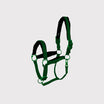 Headcollars and Ropes
Headcollars and Ropes Bits
Bits Other Disciplines
Other Disciplines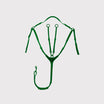 Reins and Auxiliary Reins
Reins and Auxiliary Reins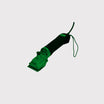 Clipping
Clipping Western
Western Eventing
Eventing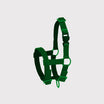 Foals
Foals Reflection
Reflection Therapy Products
Therapy Products Boots and Shoes
Boots and Shoes Breeches and Belts
Breeches and Belts Tops
Tops Safety
Safety Competition
Competition Heated Clothing
Heated Clothing Gloves
Gloves Socks
Socks Spurs and Attachments
Spurs and Attachments Technology
Technology Whips
Whips Gifts
Gifts Casual Wear
Casual Wear Underwear
Underwear Rider Pharmacy
Rider Pharmacy Bags
Bags Books
Books Laundry supplies
Laundry supplies Jewelry
Jewelry Feed and Waterbowls
Feed and Waterbowls Equipment
Equipment Tack Room
Tack Room Pest Control
Pest Control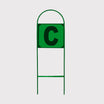 Arena
Arena Horse Toys
Horse Toys Wheelbarrows
Wheelbarrows Yard
Yard Surveillance
Surveillance Disinfect
Disinfect Washing Area
Washing Area Lighting
Lighting Horse Pasture
Horse Pasture Current Conductors
Current Conductors Pole
Pole Insulators
Insulators Energisers
Energisers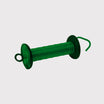 Gate Handles
Gate Handles Batteries and Accumulator
Batteries and Accumulator Nets
Nets Grounding
Grounding Tools
Tools Fencing Security
Fencing Security Wolf Defense
Wolf Defense Fencing Sets
Fencing Sets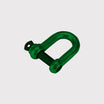 Fence locks
Fence locks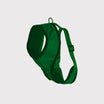 Dogs
Dogs Cats
Cats Rodents
Rodents Dogs Pharmacy
Dogs Pharmacy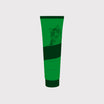 Cats Pharmacy
Cats Pharmacy Rodents Pharmacy
Rodents Pharmacy Cattle Pharmacy
Cattle Pharmacy Poultry Pharmacy
Poultry Pharmacy Veterinary Supplies
Veterinary Supplies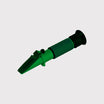 Cattle
Cattle Sheep and Goats
Sheep and Goats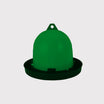 Poultry
Poultry Heat Lamps
Heat Lamps Calves
Calves Marking
Marking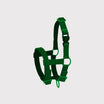 Halters
Halters